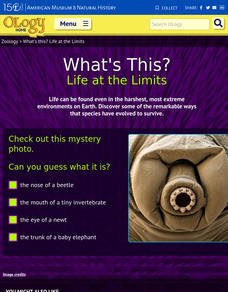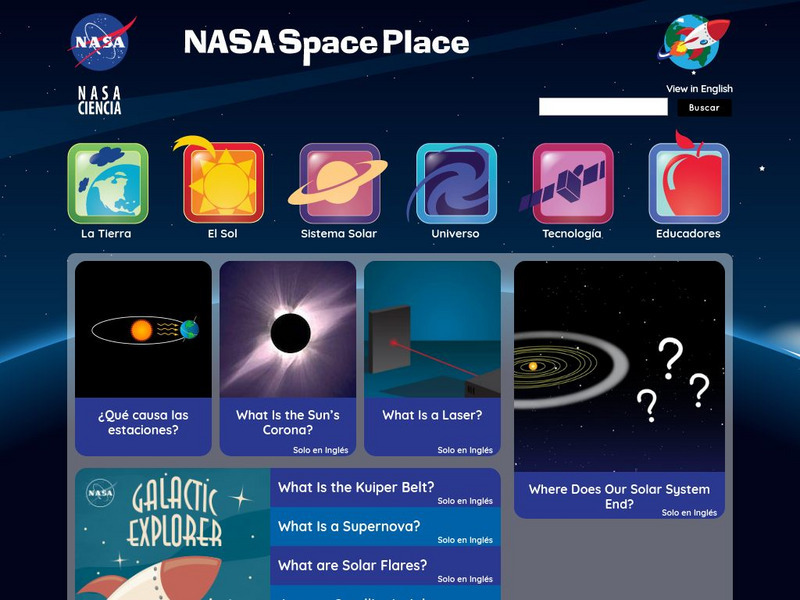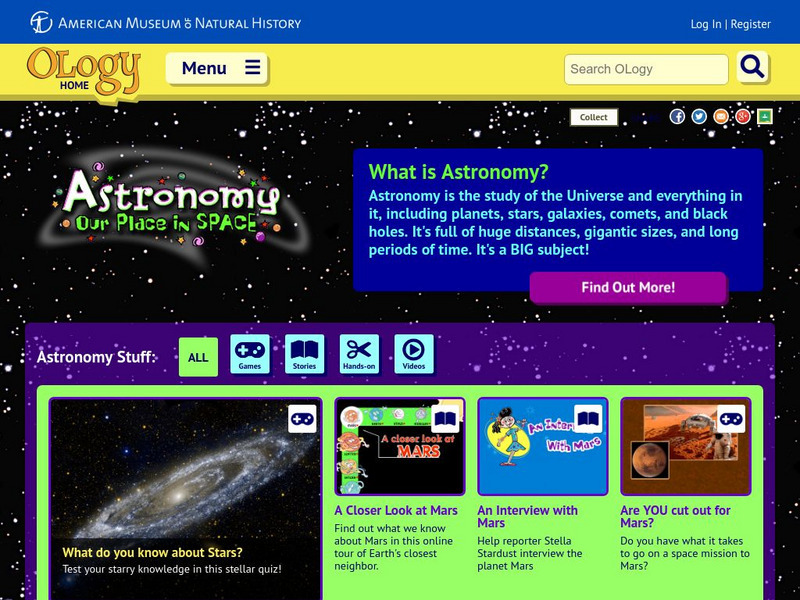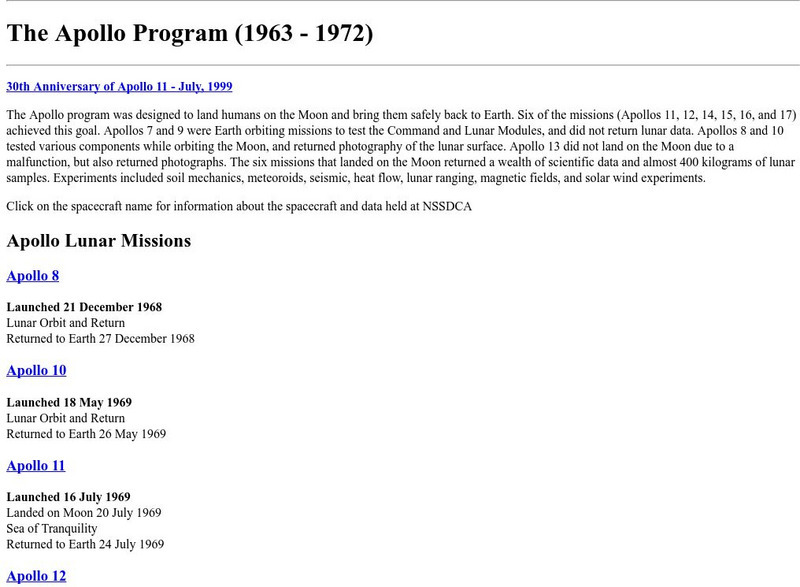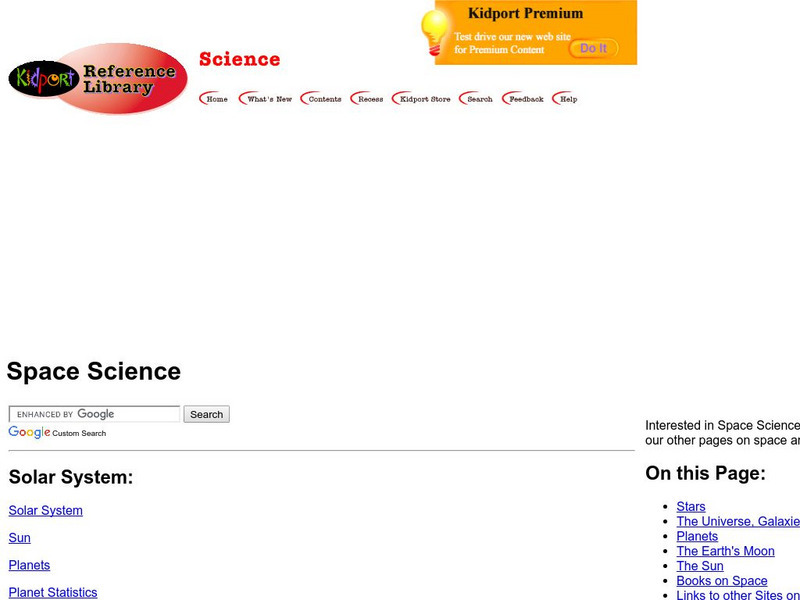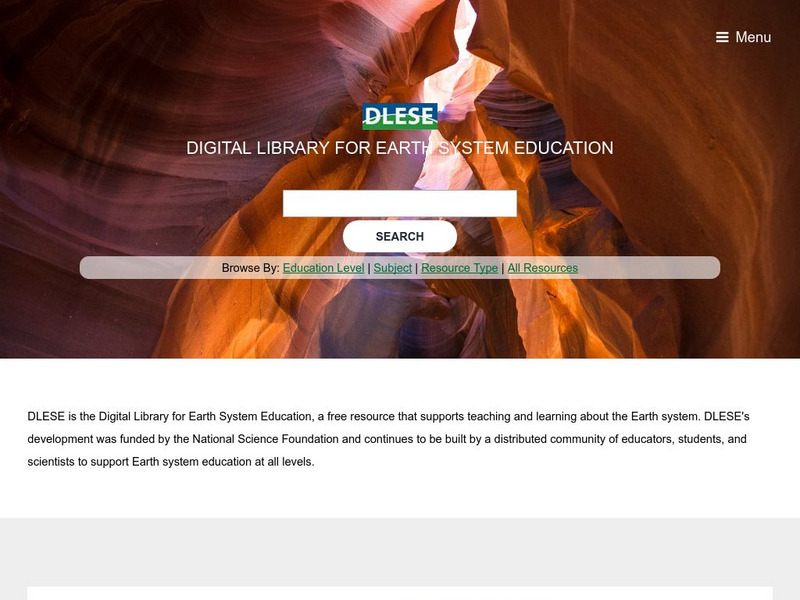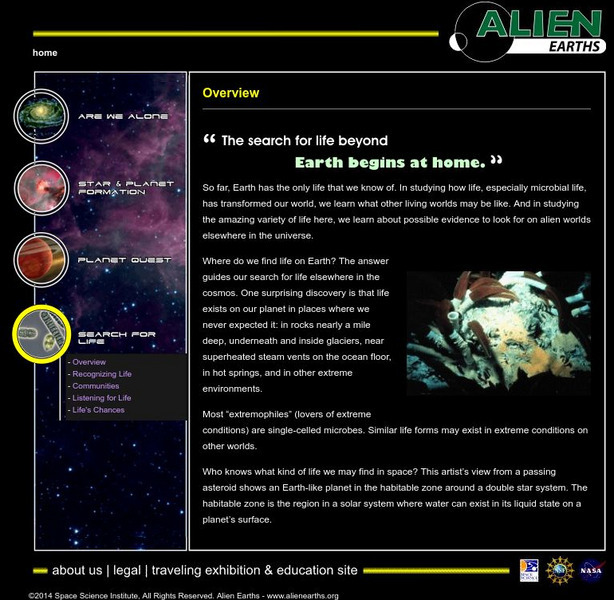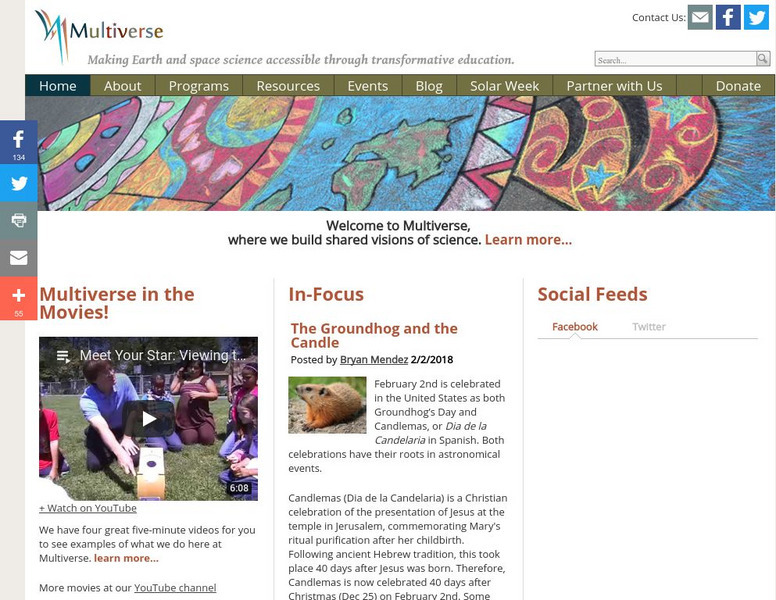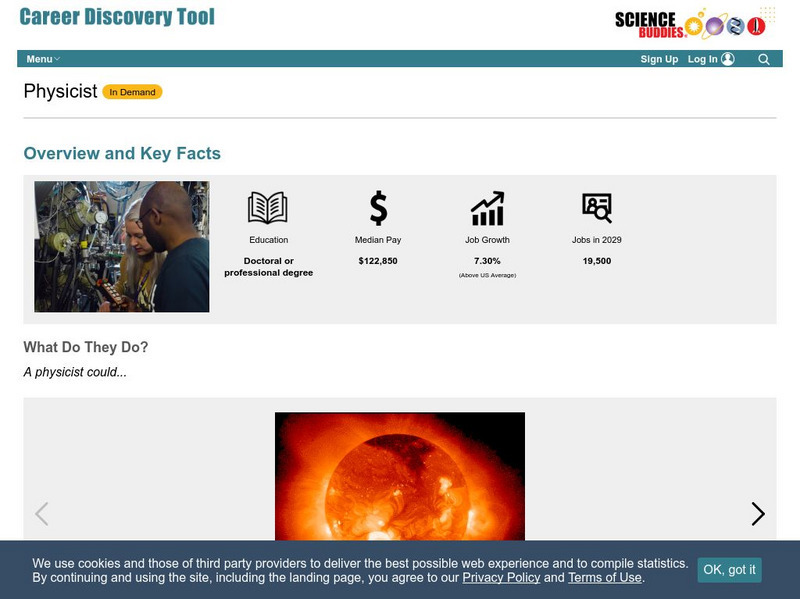Weber State University
The Sun and the Seasons
Why is there more daylight in June than in December if you live above the equator? How does the angle of sunlight shift throughout the year? Answer these questions and more with an interactive article about the sun, its path through the...
American Museum of Natural History
What is the Greenhouse Effect?
Without the greenhouse effect, Earth would not be inhabitable. A thorough online resource describes the greenhouse effect and how it occurs. The source highlights the different types of gases that work together to absorb the sun's...
American Museum of Natural History
Journey to the Stars
Fifteen detailed pictures and informative captions delve deep into the exploration of stars—their life cycle and importance in the universe.
American Museum of Natural History
Planetary Mysteries
Get to know our little part of the vast universe. Learners read about the common and not-so-common facts about each of the planets in the solar system. The interactive lesson includes a large amount of information as well as a quiz to...
American Museum of Natural History
The Amazing Mundo
Rocks and minerals are great on their own, but they also turn into some pretty amazing stuff! An online lesson explains the different types of materials we get from rocks and minerals, including glass, plastic, and coins. An embedded...
American Museum of Natural History
Meet the Universe's Main Attraction ... Gravity
Learners read a short description about gravity and what it does and then explore the two ideas about how gravity works. After gaining a better understanding of the concept, individuals participate in a thorough experiment on what would...
American Museum of Natural History
What's This? Life at the Limits
There are some amazing ways species evolve to survive. From large ears to sneezing salt, learners read about these interesting adaptations in an interactive lesson. Great to supplement an in-class lesson, it also works well as a remote...
Other
National Center for Earth and Space Science Education (Ncesse)
An organization committed to promoting education in the earth and space sciences. Highlights current research, projects students can participate in, professional development opportunities, and educational programs, such as visiting...
NASA
Nasa: Earth and Space Science Explorers Poster
This poster of NASA Earth and Space Science Explorers is great for classrooms.
NASA
Nasa: Earth and Space Science Explorers Poster
This poster of NASA Earth and Space Science Explorers is great for classrooms.
NASA
Nasa Space Place: El Space Place
NASA's space science site for kids - en Espanol. Features a wide range of activities, including games, projects, animations, and more. Also contains useful information on basic physics, chemistry, and other natural sciences, offering...
American Museum of Natural History
American Museum of Natural History: O Logy: Astronomy: Our Place in Space
This resource is a place for learning all about astronomy--stargazing, planets, space science, and interesting astronomical phenomena and discoveries. Explore, ask questions, find information, and meet American Museum of Natural History...
BSCS Science Learning
Bscs: Bscs Middle School Science
BSCS Middle School Science is a standards and inquiry-based program comprised of four units: Earth/Space Science, Life Science, Physical Science, and Science and Society. The curriculum is available free online for teachers.
NASA
Nasa Space Science Data Archive: Apollo Program
This is an extensive online review of the 17 Apollo missions. Resources are organized by mission number and include descriptions, mission details, photographs, and scientific data sets.
NASA
Nasa: The Space Place
Do you know what a solar eclipse is? Or how about a galaxy? Space Place has the answers to all your questions about space! Site includes information to explore about planets, satellites, moons, and much more. Also on the website are...
Kidport
Kidport: Space Science
This complete resource will help students to improve their understand of space exploration. Includes images of the universe, galaxies, stars and planets.
Other
Digital Library for Earth System Education
This site from Digital Library for Earth System Education provides materials for students and teachers on a huge array of topics. Search site by topic, grade level, and desired output (such as lesson plan, case study, assessment or...
NASA
Nasa Space Science Data Archive: Photo Gallery: Galileo
A well-indexed collection of NASA images taken by the Galileo spacecraft. Images include the spacecraft itself prior to launch and all of the solar system objects this incredible mission has visited.
Other
Space Science Institute: Alien Earths: Planet Quest
New technologies are continually being developed to help us look deeper into space to discover new planets and to search for other intelligent life forms. Learn about some of these initiatives here.
Other
Space Science Institute: Alien Earths: Search for Life
How do you recognize life on another planet? What tests do scientists use to determine if something is a life form when they are many light years away from being able to observe it directly? Try your hand at interactives to create a...
Other
Space Science Institute: Alien Earths: Star and Planet Formation
Learn about the lives of stars, and how stars and planets form. The Interactive activity, 'Planet Families' requires Adobe Flash and cannot be launched.
University of California
Multiverse
Resource works to increase diversity in Earth and Space science through multicultural education.
Science Buddies
Science Buddies: Career Profile: Physicist
Physicist as a career is a very broad spectrum. This site from Science Buddies relates the general requirements and education needed to be a physicist and lists the many sub-fields in which physicists can specialize. Included is a video...
PBS
Pbs Learning Media: Earth and Moon
Students are asked to compare and contrast the earth and the moon.






